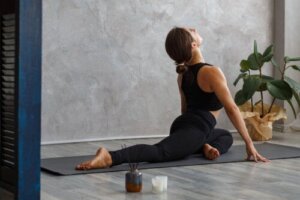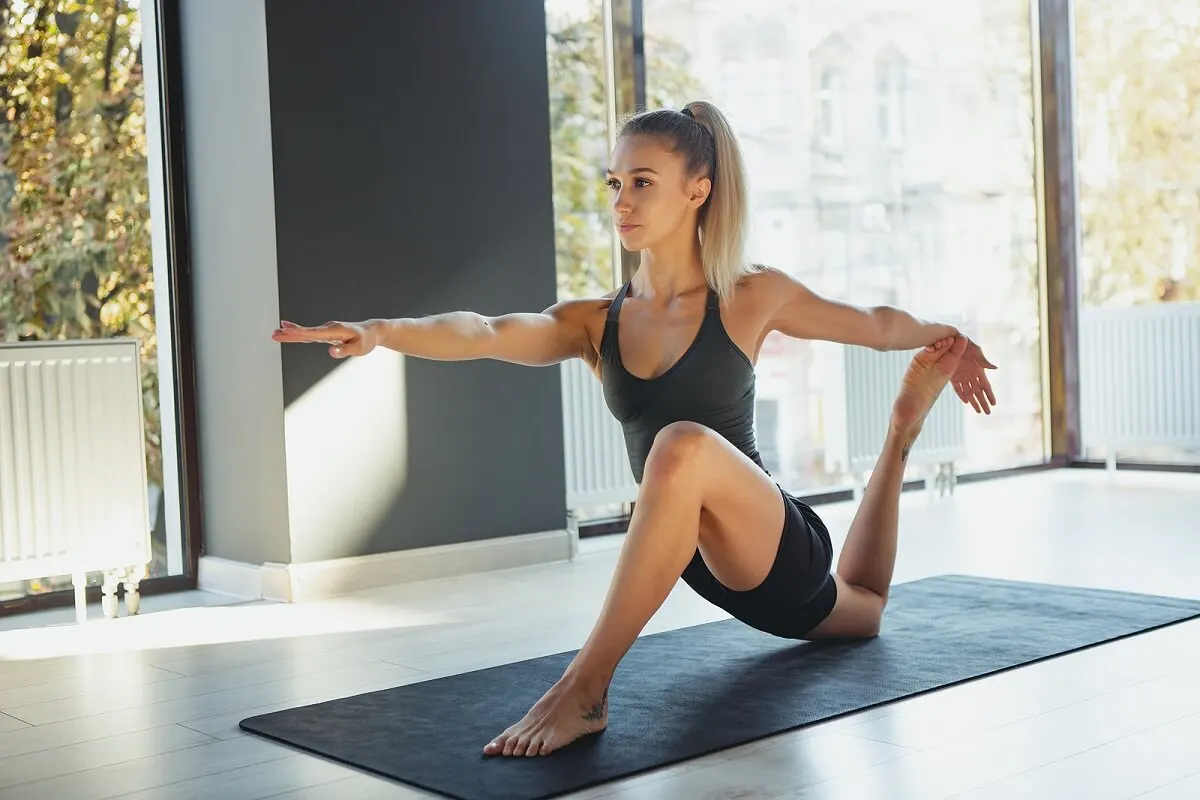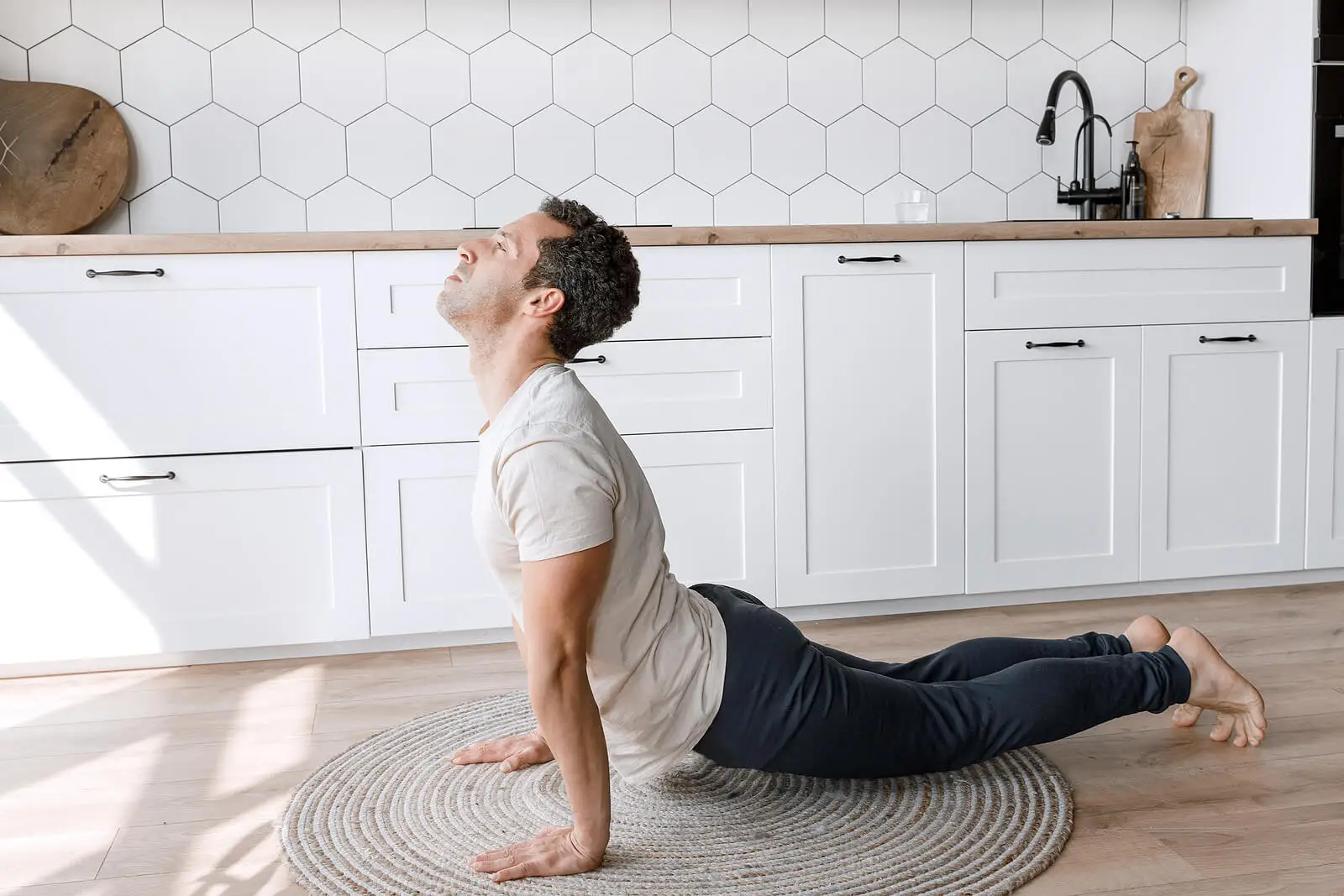Hatha Yoga: Benefits and How to Practice It

Hatha yoga is one of the most popular branches of the discipline. Beginners find it the perfect way to start practicing it, and then move on to other modalities. In particular, it’s associated with the release of stress and the achievement of calm and concentration.
And the best thing of all? Everyone can try it, as there are no age or physical condition limits. However, ideally you should have a professional guide, who teaches the connection between physical and mental exercise. Read on!
What is Hatha yoga?
Yoga in its Hatha classification refers to the execution of positions and breathing techniques oriented towards full attention. The beginnings of this practice date back to India, based on the skills described in the Pradipika.
Some call it “yoga of strength”, others stick to the meaning of the word; “ha” is sun and “tha” is moon, so they assume that it seeks the union between solar and lunar energies, as well as the masculine and feminine characteristics of every person.

Characteristics of Hatha yoga
Hatha is a more static asana than the other varieties; it’s characterized by stretching, alignment and maintaining postures. It isn’t as challenging as other forms of exercise.
Its essence achieves a harmonious sequence, which goes from the internal to the external, so that each session helps to manifest the moral and ethical lessons embodied in the Pradipika. The teachings revolve around the following principles.
- Yama: the rules relating to behavior.
- Niyama: self-discipline and spiritual observance.
- Asana:this corresponds to physical postures that seek concentration.
- Pranayama: controlling your breathing until it connects with the emotions.
- Pratyahara: This consists of introspection, moving away from distractions, and attending to the inner self.
- Dharana: Here you concentrate on particular thoughts and meditate on them.
- Dhyana: This is the ultimate stillness – uninterrupted meditation.
- Samadhi: This claims to transcend self and integrate with the universe.
Find out more here: Ayayoga: What Is It and What Are Its Benefits?
The benefits of Hatha yoga
Hatha, like the other varieties of yoga, offers multiple benefits. According to experts, yoga serves as physical, cognitive and behavioral therapy for older adults.
In the same vein, according to the journal Anales de la Facultad de Ciencias Médicas, there’s evidence of the usefulness of these non-conventional exercises for people’s health.
To be more precise, the asanas of Hatha yoga favor the joints, minimize inflammation, improve digestion and stimulate the immune system. Here are some other benefits.
It relieves severe pain
Harvard Medical School lists Hatha as the most popular yoga style in the United States. They point out that the discipline helps relieve chronic pain and is beneficial for patients suffering from the following diseases:
- Arthritis
- Migraine
- Fibromyalgia
- Lumbar pain
Yoga classes work as a complement to medicine.
It promotes rest
A paper by Johns Hopkins Medicine recommends Hatha yoga to improve sleep. The institution argues that, thanks to the breathing exercises and postures involved, this activity favors the quality of rest.
It helps flexibility
The sequences in Hatha provide strength and gradual flexibility, which contributes to a good physical condition.
Improves lung capacity
It does so by working on different types of breathing, and thus improves lung and heart capacity. The Rama Yoga School recommends the practice in times of low temperatures and frost, in order to strengthen the respiratory system.
It reduces stress and anxiety
The classes of this type of yoga are linked to the reduction of anxiety. Middlesex Health asserts that, due to its slow exercises, Hatha postures are a good choice for managing stress and enhancing mindfulness.
It strengthens muscles and spine
Holding the postures for several minutes strengthens the muscles. It also tones the spine and, due to the gentle movements, helps the proper flow of nerve impulses.
We invite you to read: 10 Reasons that Yoga is Great for Overweight People
How to practice the basic asanas of Hatha yoga?
Hatha groups submodalities such as Inyegar, Ashtanga, Vinyasa, and dynamic yoga. It’s advisable to explore and stay with the variant that suits your needs. For the sessions, even if they’re in a class or at home with videos, the following elements are useful:
- A yoga mat
- A yoga block
- A meditation blanket
- A yoga strap
With proper instruction, perform each asana for at least 30 seconds about 10 times. During this time, regulate deep inhalations and exhalations. Among the most common postures are those described below.
The tree
Its other name is Vrikshasana and it’s very beneficial because it rejuvenates the body by stretching the legs, back and arms. Apart from promoting balance, it can help to relieve some cases of sciatica.
It’s best to avoid this asana if you suffer from low or high blood pressure, insomnia, or headaches. To perform it, follow these instructions:
- While standing, bend your right knee bringing your foot to the inside of the left thigh.
- Balance the supporting leg, keeping it straight.
- Take a breath, raise your arms and place your hands on your head as a sign of Namaste.
- Fix your gaze on an object in front of you, while breathing long and deeply until you relax.
- After half a minute, exhale, lower your right leg, and direct your hands to your sides.
- Repeat the steps with the left leg.
The bridge
This position is Setu Bandhasana, and used to stimulate the abdominal organs, digestion, thyroid and lungs. It also reduces fatigue and menstrual discomfort.
It isn’t a suitable asana for knee, neck, shoulder or back injuries. Perform it as we show you now.
- Lie down in Shavasana, with your arms stretched out lengthwise.
- Bend your knees and leave your feet flat.
- Grasp the ankle with your palms and breathe.
- Lift your back in a relaxed manner.
- Inhale and exhale calmly.
- With a deep exhalation, lower your back and rest.
Forward fold
Uttanasana represents a path to relief from depression and stress. Likewise, it reduces symptoms of menopause, asthma, high blood pressure, among other conditions.
People with back injuries should not do this posture or, failing that, they can modify it by bending the knees.
- Begin by raising your hands as in Urdhva Hastasana.
- Lower the arms to the sides of the body and descend in a forward fold from the hips.
- Align the toes and press the mat with the palms of the hands.
- Bend your knees slightly and drive your weight into your heels, keeping your hips above your ankles. Let your head hang and prepare to return to the start.
- Return to the starting position, inhaling and slowly straightening up.
The cobra
The yoga term is Bhujangasana and it has to do with flexibility and mobility of the spine and neck. You do the cobra pose as follows.
- Lie face down on the mat.
- Stretch your legs out and keep your feet together, supporting your insteps.
- Extend your hands along your body and allow your palms to press into the floor.
- Breathe in, lift your head and chest, and slightly bend your arms without withdrawing them from your sides.
- The pelvis and thighs rest on the mat.
- Complete several breathing cycles. The last one is to return to the beginning, touching your forehead to the floor.

The grasshopper
Salabhasana, or the grasshopper, involves ample muscular effort and intensity. This posture promotes flexibility in the lumbar region and massages the digestive system.
It’s also an allied asana in the correction of curvature problems. You perform it as follows:
- Lie on your stomach with your arms at your sides. The palms of your hands will be facing upwards.
- Take a breath and lift your head, chest, and legs. In parallel, stretch your arms backwards.
- Exhale and lower your arms and legs at the same time.
Considerations if you’re new to Hatha yoga
In a publication of the National Library of Medicine of the United States they point out that, for yoga in general, the best thing is to begin slowly and with basic movements.
Look for classes according to your level and always count on the advice of an expert in yoga. Those who have any health condition should consult with their doctor before beginning the discipline.
All cited sources were thoroughly reviewed by our team to ensure their quality, reliability, currency, and validity. The bibliography of this article was considered reliable and of academic or scientific accuracy.
- Almirón M, Giménez G, Olguin G. Yoga: beneficios para la salud. Una revisión de la literatura. Anales de la Facultad de Ciencias Médicas (Asunción). Vol. 53. Núm. 2. pp. 137-144. Paraguay; 2020. https://www.mendeley.com/catalogue/1f79c1bd-f033-3259-a50a-31dfd98145ee/?utm_source=desktop&utm_medium=1.19.4&utm_campaign=open_catalog&userDocumentId=%7B208322d8-8a44-4a06-98e9-cfd2481994f9%7D
- Pacheco Carbelo S. La práctica del yoga y sus beneficios en las personas mayores. Metas de Enfermería. Vol. 18. Núm. 7. España; 2015. https://www.mendeley.com/catalogue/fb47889b-dc0d-3917-a1ad-7488b6b30c13/?utm_source=desktop&utm_medium=1.19.4&utm_campaign=open_catalog&userDocumentId=%7Bc4a6f7d7-fa09-44b7-83da-9d3b2f6bc767%7D
- ¿Por qué es bueno el yoga para los pulmones y el aparato respiratorio? Rama Escuela Yoga. México. https://ramayoga.org/yoga-para-los-pulmones-y-el-aparato-respiratorio/
- Serie de talleres CE. Hatha yoga Pradipika, parte 1. Yoga Alliance. Estados Unidos; 2020. https://www.yogaalliance.org/Get_Involved/COVID-19_Resources/Archived_COVID-19_Workshops_and_Events/CE_Workshop_Hatha_Yoga_Pradipika_Series_Part_1
- Yoga: Combatir el estrés y encontrar serenidad. Middlesex Health. Estados Unidos; 2020. https://middlesexhealth.org/learning-center/espanol/articulos/yoga-combatir-el-estr-s-y-encontrar-serenidad
- Yoga para aliviar el dolor. Harvard Health Publishing. Harvard Medical School. Estados Unidos; 2015. https://www.health.harvard.edu/alternative-and-integrative-health/yoga-for-pain-relief
- Yoga para dormir. John Hopkins Medicine. Estados Unidos. https://www.hopkinsmedicine.org/health/wellness-and-prevention/yoga-for-sleep
- Yoga para la salud. Medline Plus. Biblioteca Nacional de Medicina. Estados Unidos; 2020. https://medlineplus.gov/spanish/ency/patientinstructions/000876.htm#:~:text=El%20yoga%20puede%20mejorar%20el,Ayudarle%20a%20relajarse
This text is provided for informational purposes only and does not replace consultation with a professional. If in doubt, consult your specialist.








